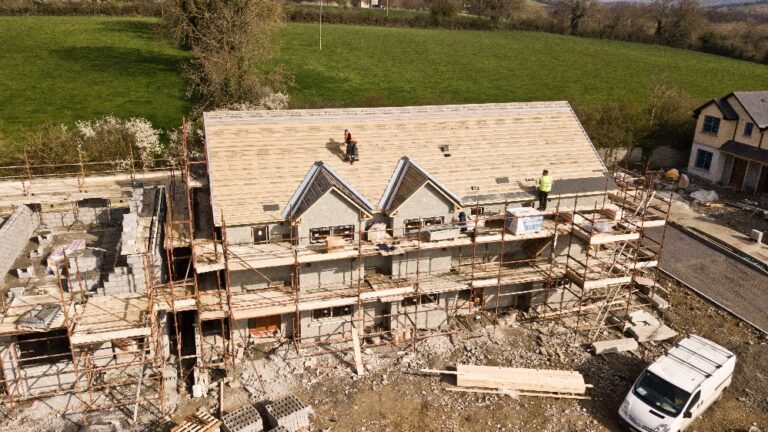It’s critical to move quickly to inspect and reduce damage when a storm damages your roof, whether it’s due to hail, high winds, heavy rain, or even falling debris. If ignored, a damaged roof can result in serious difficulties, including water leaks, structural problems, and mold development. Following these five essential procedures is imperative if the roofing has storm damage.
Safeguard your home’s integrity with our dedicated emergency roof solutions.
1. Assess Interior Damage
One of the most important steps in the evaluation procedure is to look for indicators of storm damage within your property. You can better comprehend the entire extent of the storm’s devastation with the aid of this inside assessment. Start by looking for any obvious indications of water intrusion in your ceilings, walls, and attic areas. On your walls and ceilings, look for water stains, discoloration, or flaking paint. Check the insulation and wooden constructions in the attic for signs of moisture or mold development, which may indicate roof leaks. It is crucial to find and record inside damage since it shows the storm’s impact and might be useful for filing insurance claims.
2. Schedule a Professional Roof Inspection
Even though you might have already done some short-term fixes to deal with the immediate problems, it’s crucial to get a professional roof inspection following a storm. A skilled roofing contractor, such as an Austin storm damage roof repair contractor, has the knowledge and skills necessary to conduct an in-depth evaluation of the state of your roof. Along with the obvious damage, they will look for any potential concealed problems that might not be seen right away. A roofing contractor will evaluate the roofing components, flashing, gutters, and structural soundness during the inspection. They’ll provide you with a thorough report explaining the degree of the harm and suggesting the required fixes or alternatives. Engaging a professional helps you repair your roof’s functioning and extend its lifespan by ensuring that no damage is missed.
3. Understand Insurance Coverage
Understanding your insurance coverage is essential while navigating the claims-handling process following storm damage. To understand your insurance policy’s coverage for storm-related damage, start by reading it. Pay particular attention to features like deductibles, coverage thresholds, and any unique claim filing procedures. Speak with an insurance representative for further information to help you understand. As you go through the claims procedure, ask questions if anything is unclear. Making educated judgments during the reimbursement procedure and avoiding any unforeseen financial constraints depends on your knowledge of what to anticipate and the comprehension of your financial obligations, such as the deductible.
4. Consider Preventive Measures
After dealing with the storm damage and repairing your roof, it’s a good idea to think about precautions that might shield your roof from further storm damage. These steps can strengthen the structure of your roof and lower the possibility of future damage of the same nature. Reinforcing roofing materials is one way to make them more resistant to strong winds and hail. For example, impact-resistant shingles can add another layer of defense against storm damage. Additionally, enhancing the drainage system on your roof might aid in preventing water buildup and leaks. You may reduce the probability of future storm-related problems by taking preventive measures to protect your roof, thereby saving you time and money.
5. Maintenance
The continuing health and lifespan of your roofing system depend on routine roof inspections. After dealing with storm damage, create a regular program for roof inspections. If you reside in a region that has regular severe weather, consider having these inspections more frequently than once a year. Early detection of possible problems by routine maintenance and prompt fixes can save them from developing into serious concerns. Roofing specialists can identify wear and tear, loose or broken shingles, or decaying flashing during inspections. You can prolong the life of your roof and greatly lower the chance of more storm damage by taking care of these problems right now.
Conclusion
In conclusion, it is crucial to respond quickly and meticulously to storm damage to your roof if you want to avoid subsequent problems and guarantee a full recovery. You can negotiate the storm’s aftermath and strive to restore the integrity and protection of your roof and house by taking these five actions. Keep in mind that taking preventative measures and proactive steps like routine roof inspections are essential to lessening the effects of storms in the future and maintaining the long-term functioning of the roof you have.
